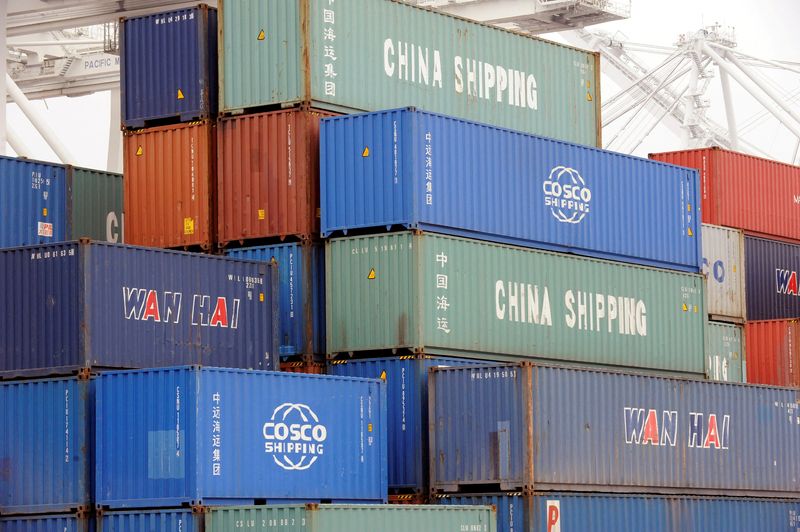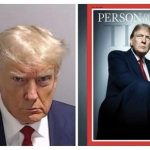
By David Lawder
WASHINGTON (Reuters) – Iowa farmer Bob Hemesath is worried that U.S. agriculture will pay dearly if Donald Trump wins Tuesday’s presidential election and makes good on a vow to swiftly impose a 60% tariff on Chinese goods and at least a 10% levy on all other imports.
It could be a much worse rerun of the Republican former president’s 2018-2019 trade war with China that hit U.S. farm goods with retaliatory tariffs and shifted Beijing’s purchases to Brazil and Argentina, said Hemesath, who grows corn and soybeans and raises hogs on 2,800 acres of land in northeastern Iowa.
“When we start putting tariffs on others, usually the retaliatory tariffs end up on American agricultural products,” said Hemesath, who chairs the Farmers for Free Trade advocacy group.
“What I worry about is that when you do those kinds of things, you lose that market share, and you just don’t get that market share back,” he said. Hemesath declined to say who he was voting for in the election.
Economists say that Trump’s tariff plans, likely his most consequential economic policy, would push U.S. import duty rates back up to 1930s-era levels, stoke inflation, collapse U.S.-China trade, draw retaliation and drastically reorder supply chains.
Hemesath’s concerns were echoed in a recent study by the National Corn Growers Association and American Soybean Association, which forecast that a new China trade war could prompt deeper U.S. crop export losses, push down already depressed domestic prices and cement a shift of China’s imports to Brazil and Argentina.
Trump, who is in a neck-and-neck race for the White House against Democratic Vice President Kamala Harris, has called tariffs “the most beautiful word in the world” and argued that his plans would rebuild the U.S. manufacturing base, grow U.S. jobs and incomes and earn trillions of dollars in federal revenues over 10 years.
Economists universally agree tariffs are paid by the companies that import the products subject to the duties, and they either pass on the costs to consumers or accept lower profits.
The duties, if fully imposed, would raise effective average U.S. tariff levels to 17.7%, the highest since 1934, according to the conservative-leaning Tax Foundation. The plans have drawn comparisons to the Smoot-Hawley Tariff Act of 1930, which sharply raised U.S. tariffs, triggering retaliation and a global collapse of trade that helped worsen the Great Depression.
In the aftermath of World War Two, countries scrapped this “beggar-thy-neighbor” approach in favor of a rules-based trading system with much lower non-discriminatory tariffs and what is now the World Trade Organization at its core.
“The approach Trump is taking, I think would totally destroy that system,” said Maurice Obstfeld, an economics professor emeritus at the University of California, Berkeley who served as the International Monetary Fund’s chief economist from 2015 to 2018.
Other countries would respond with tariff hikes of their own and “you basically open the door to a sort of free-for-all in trade policy, which I think, among other things, is very confusing for businesses,” Obstfeld said.
Overall U.S.-China trade would plunge 70% from levels already reduced by Trump’s 2018-2019 China tariffs that were maintained and recently increased by Democratic President Joe Biden, said Bernard Yaros, lead U.S. economist at Oxford Economics.
Yaros said the post-tariff landscape would not shrink the overall U.S. trade deficit, but trigger a “great reordering of trade flows” with other countries that could be costly in the short run.
COST INCREASES
Harris, who replaced Biden as the Democratic presidential candidate after he ended his campaign in July, has slammed Trump’s tariff plans as “a national sales tax” that will cost U.S. families up to $4,000 a year.
Yale University’s Budget Lab estimates that the total reduction in annual household income under 10% global and 60% China tariffs would be $2,576 including the impact of retaliation, but could reach up to $7,600 if Trump makes good on comments in which he said he could impose a 20% global tariff and 200% levy on some goods from Mexico, including autos.
The Yale lab, staffed by some former Biden administration economic and tax advisers, calculates that Trump’s tariffs would initially raise the level of consumer prices by 1.2% to 5.1%, or about seven to 31 months of normal inflation at the Federal Reserve’s 2% annual target.
A Trump campaign spokesperson responded by citing a study from the Coalition for a Prosperous America, a tariff advocacy group, which shows that a 10% universal tariff would not cause “meaningful price increases” and would, when combined with offsetting tax cuts, generate $728 billion worth of economic growth and 2.8 million jobs.
Inflation did not significantly increase after the 2018-2019 Trump tariffs of 7.5% to 25% were imposed on $370 billion worth of Chinese goods. But his proposed 60% tariff would hit Chinese consumer goods, ranging from toys to T-shirts, with dramatically higher duties and the 10% universal tariff would apply to more than $3.8 trillion in annual U.S. imports.
Harris has endorsed the Biden administration’s more targeted approach to tariffs to protect strategic U.S. industries, but said in September that she would renegotiate the Trump-negotiated United States-Mexico-Canada Agreement on trade in 2026 to protect U.S. automotive jobs.
TRADE TOOLS READY
Trump may be able to act within months to impose tariffs, relying on the same “Section 232” national security law used to impose global steel and aluminum tariffs and the “Section 301” unfair trade practices statute used for the tariffs aimed at China.
Neither track would require approval by the U.S. Congress, and Trump could also invoke the International Emergency Economic Powers Act.
Former U.S. Trade Representative Robert Lighthizer, who engineered Trump’s China tariffs, is advising the Republican candidate’s campaign and is frequently mentioned in Republican circles as a potential cabinet member in a second Trump administration.
Nazak Nikakhtar, a trade and national security lawyer at Wiley Rein who was an assistant secretary at the Commerce Department during the Trump administration, said Section 232 could be applied to justify broader tariffs, while higher China tariffs could easily be introduced under a Section 301 probe targeting China’s subsidy and industry domination practices.
“A new investigation is not a heavy lift and can rely on well-documented evidence of unjustified Chinese export practices,” Nikakhtar said. “So you can complete one pretty quickly. It doesn’t have to take a year.”






